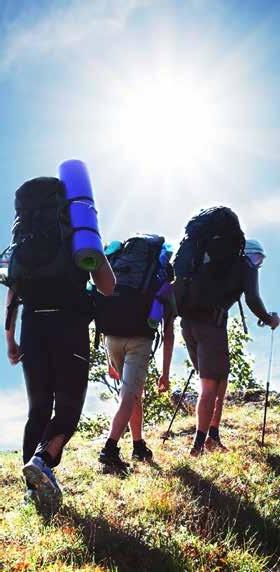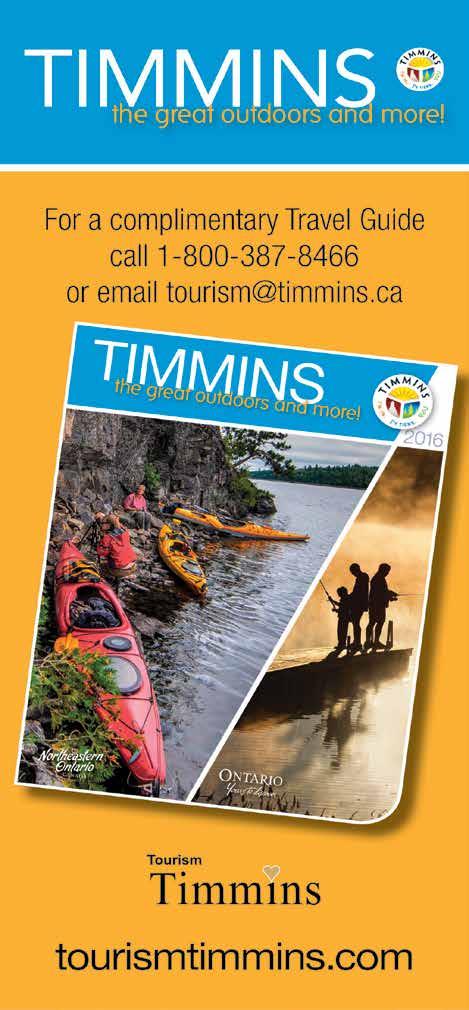
2 minute read
Get set for that first backcountry adventure
The essentials
Many organizations and guides agree on equipment that all backcountry trekkers should have. You may not need everything on this list, but taken together it can save you if things go wrong. This is the list from Mountaineering: The Freedom of the Hills (eighth edition): • Navigation (maps and compass/GPS/altimeter) • Sun protection (sunscreen/ protective clothing/ sunglasses) • Insulation (appropriate clothing plus extra) • Illumination (headlamp/ flashlight and power source) • First aid kit • Fire (waterproof matches/ starters) • Repair supplies and tools (knife, multitool, duct tape, trowel) • Nutrition (enough food for one day longer than you plan to be away) • Hydration (water treatment) • Emergency shelter
Advertisement
BY JENNA THOMPSON
There’s a next-step question in the minds of many campground campers: how about the peace and freedom of backcountry camping? That step into the wilderness can seem intimidating, but it’s less scary if you break it into little steps with some easy-to-handle ideas.
Start with the car-camping you know, but practise backcountry skills along the way. Skip the infrastructure amenities of the campground (drinking water on tap, showers, electricity) and put the car off limits for storage. Take the familiarity a step further on a short one- or two-night trip with a doable hike on the way in, accompanied by a backcountry-savvy friend if you can. Short treks give a sense of what it’s like being away from the vehicle and other amenities, but leave you with the security of knowing they are close by if you need them.
Frontenac Provincial Park north of Sydenham has campsites as little as 20 minutes hiking a way from the parking area and plenty more around two hours away. Charleston Lake Provincial Park, near Lyndhurst also has hikes from 10 minutes to a few hours to your site. Packing everything in on these shorter trips shines a light on gear that’s inadequate, unnecessary or missing. After a couple of such outings, you’ll be ready to try longer, more remote trips.
EQUIPMENT
Borrow or rent backcountry gear on your first trek. It has to be small and light, since you carry it yourself in a sturdy large backpack. Lightweight tents, sleeping bags and stoves designed for backpacking make a huge weight difference. You have to find your own drinking water, so bring a filter or iodine tablets. A first aid kit is essential. No toilets or showers, so bring soap and towels, a trowel to dig a hole and toilet paper packed in something waterproof. Most gear needs to be packed efficiently and in a waterproof manner.
Signage may be limited at best, so get an area map and learn how to navigate with it using a compass or GPS. You’ve got to eat, and food storage will not be a cooler in the car, so choose foods that pack easily and need no refrigeration (dehydrated foods work well). Learn how to hang food in a bear bag, and think about the wildlife you might encounter and how to respond to it. Plan what you might do if something goes wrong or if equipment fails.
That’s a lot to think about but the experience of the night sky, trees and lake with no cars or radio, and loons to serenade you to sleep, is incredibly rewarding. More info? Mountain Equipment Co-op runs free Backcountry 101 clinics. They’re on its website.












